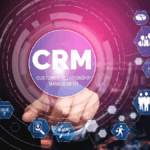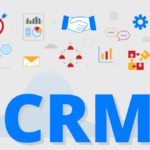In today’s highly competitive business environment, Customer Relationship Management (CRM) software is more than just a tool—it’s a strategic asset. When used correctly, a CRM system can help companies streamline operations, improve customer engagement, and most importantly, maximize return on investment (ROI).
But getting the most out of your CRM requires more than simply installing the software. You need to use it effectively, integrate it with your business strategy, and align your team with clear goals. Here’s how to maximize your ROI using CRM software.
1. Define Clear Business Objectives
Before implementing a CRM system, set specific, measurable goals. What do you hope to achieve?
- Increase sales by 20% in 6 months?
- Improve customer retention by 15%?
- Shorten the sales cycle?
Having clear objectives helps you configure your CRM for meaningful results. It also allows you to track performance and ROI more accurately.
2. Train Your Team Thoroughly
Even the most powerful CRM software is only as effective as the people using it. Without proper training, your staff may underutilize or misuse the system.
- Onboard every user with detailed training sessions.
- Encourage continuous learning through webinars, courses, and support resources.
- Appoint CRM champions within departments to assist others and promote best practices.
An informed team is crucial for extracting value from CRM tools.
3. Integrate CRM With Other Systems
To unlock the full potential of your CRM, integrate it with your other business tools like:
- Email marketing platforms (e.g., Mailchimp, Constant Contact)
- Accounting software (e.g., QuickBooks, Xero)
- Customer support systems (e.g., Zendesk, Freshdesk)
- E-commerce platforms (e.g., Shopify, WooCommerce)
Integration helps consolidate customer data into a single view, enabling more personalized and efficient service.
4. Automate Repetitive Tasks
CRM platforms often offer powerful automation features. By automating routine tasks, you save time and reduce errors.
Examples include:
- Auto-sending follow-up emails
- Lead scoring and routing
- Updating contact records
- Scheduling appointments
Automation frees up your sales and support teams to focus on high-value activities that drive revenue.
5. Leverage Analytics and Reporting
Use your CRM’s reporting tools to gain insights into customer behavior, team performance, and campaign success. Track metrics like:
- Conversion rates
- Customer lifetime value (CLV)
- Churn rate
- Email open/click-through rates
- Sales rep productivity
These insights help identify what’s working, what’s not, and where you should allocate more resources to increase ROI.
6. Focus on Customer Segmentation and Personalization
Use CRM data to segment customers based on demographics, behavior, and buying history. Tailor your marketing and communication strategies to each segment.
Example:
- Offer loyalty discounts to frequent buyers.
- Send product recommendations based on past purchases.
- Re-engage inactive customers with targeted campaigns.
Personalized interactions lead to better engagement and higher sales conversions.
7. Regularly Clean and Update Data
Outdated or incorrect data reduces the efficiency of your CRM and leads to poor decisions. Set regular schedules for:
- Removing duplicates
- Verifying contact information
- Updating customer preferences
- Removing inactive leads
Clean data ensures that your reports are accurate and your campaigns are targeting the right audience.
8. Continuously Review and Optimize
Treat CRM as an evolving part of your business. Schedule regular performance reviews to measure:
- Usage rates across teams
- Sales growth
- Customer satisfaction
- System uptime and tech support responsiveness
Based on these reviews, fine-tune workflows, update strategies, and adopt new features or integrations as needed.
Conclusion
Maximizing ROI from CRM software isn’t just about the tool itself—it’s about how you use it. When implemented strategically, with proper training, automation, integrations, and data analysis, a CRM can drive remarkable business growth.
Whether you’re a small business or an enterprise, the right approach to CRM can turn customer relationships into your most valuable asset—and deliver a powerful return on every dollar invested.











